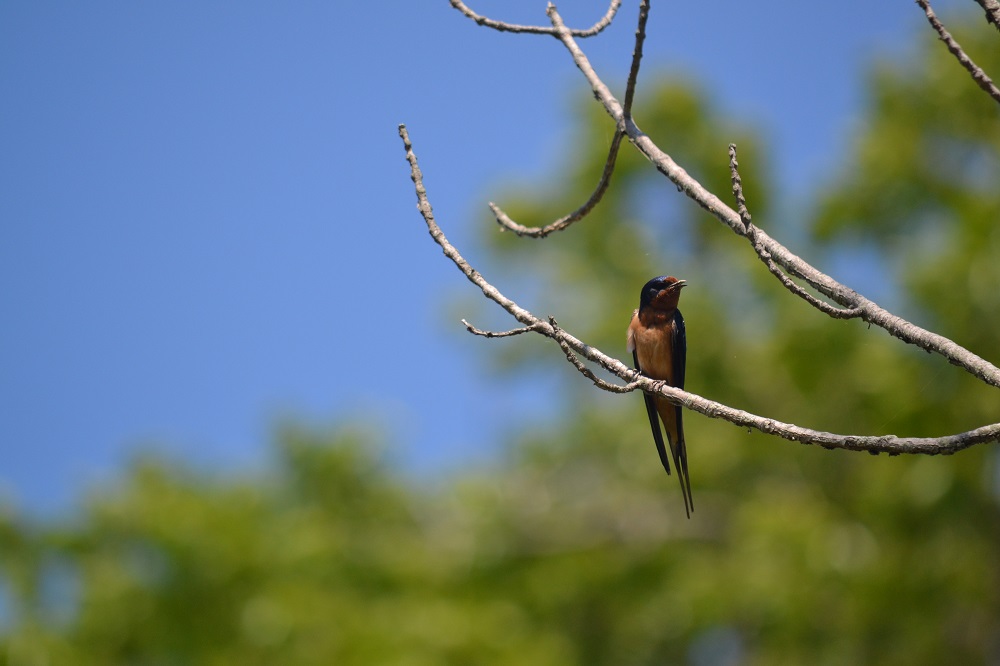Today’s post comes from Natural Heritage Education Supervisor Alistair MacKenzie at Pinery Provincial Park.
The landscape of Ontario Parks is renowned for being strongholds for myriad species, both common and rare.
A primary objective of Ontario Parks is the maintenance and restoration of ecological integrity, and the strengths of our protected areas are evident in the diversity of life found within.
Together, all of the native species found in Ontario make up the province’s biodiversity. Ontario’s biodiversity consists of species that are abundant and widespread across the province as well as others that are very rare and found only in isolated populations.
It is key to keep all of the species that we have to ensure healthy natural communities continue to thrive and provide ecological services to humans.
Ecologists often speak about species at risk (SAR) and much of the conservation work done in Ontario and elsewhere focuses on interventions to try to save these species.
So what exactly is a species at risk (SAR) and why are some species on the list and others not?
A SAR is a species that is at risk of extinction or disappearing from Ontario.

There are multiple categories to which a species can be assigned which are based upon the degree of risk. They are:
- not at risk: the species is not under threat of extinction
- data deficient: there is not enough data available to accurately assign a risk level
- special concern: the species lives in the wild in Ontario and is not currently endangered or threatened but may become so if threats are not addressed
- threatened: the species lives in the wild in Ontario and is not endangered but is likely to become endangered if steps are not taken to address factors threatening it
- endangered: the species lives in the wild in Ontario but is facing imminent extinction or extirpation
- extirpated: at one time lived in the wild in Ontario but is no longer found in the province, however it still exists in the wild elsewhere in the world.
- extinct: the species has been lost forever
How does a species become a SAR?
Ontario provides protections for species at risk and their habitats under the Endangered Species Act, 2007 (ESA).

In Ontario, the independent body of experts who assess species for SAR designation is called the Committee on the Status of Species at Risk in Ontario (COSSARO). COSSARO examines a group of candidate species each year and evaluates all the data available about the species through the review.
Once a species is designated as endangered or threatened under the ESA, a recovery strategy is created that evaluates the life history, distribution, abundance, threats, and knowledge gaps for the species and provides recommendations for the protection and recovery of the species in Ontario.
Once the government receives the recovery strategy, a Government Response Statement is drafted. This is a species-specific policy that establishes the provincial recovery goal for the species and provides a summary of the prioritized actions the government intends to lead and support in response to the associated recovery strategy.
Where do we fit in?
Provincial Parks act as refuges across much of the Ontario landscape where natural communities are protected; these habitats are key areas where SAR can be protected and studied.

Ontario Parks is also well situated to help Ontarians and visitors engage with and learn about species at risk through personal experiences, engagement with the Discovery program, and through self-led activities like participation in community science initiatives.

Despite being protected in the many protected areas of Ontario Parks across the province, parks alone cannot reverse the trend of decline for all SAR.
We must all work together to save our species
There are actions you can take to become educated and informed about SAR and how to reduce or eliminate threats to them.

When spending time in nature, you can help protect these species and do the following:
- Give all species their space. Don’t risk an animal or ecosystem’s health to get a good photo or better view
- Drive carefully and watch for any wildlife crossing
- Do not move or remove any natural objects from parks
- Submit any and all observations to iNaturalist through the NHIC rare species of Ontario project
Stay tuned as we profile some of Ontario’s species at risk and efforts being taken in Ontario Parks to reverse the trend of decline.
This is the fourth edition of our 2023 species-at-risk series.
Read our previous edition: Regarding rattlesnakes at Killbear Provincial Park
